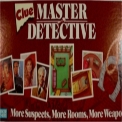Monday, May 16: Spirit of the Law
MIRRORS
by Janice Law
John Floyd’s good March 12 blog on literary genres got me thinking about other differences between work focused on art and work focused on entertainment, not that those categories are ever mutually exclusive. Shakespeare, after all, was big on contemporary genre entertainment: revenge tragedy, cross-dressing siblings, blood and gore warfare, and romps with fairies. He just happened to be a hack of pure genius.
Nor is he alone. Dostoevsky’s Crime and Punishment was “ripped from the headlines,” as modern blurb writers are fond of saying, while Jane Austen’s romances were seen as just a better grade of young ladies’ fiction.
Some modern writers have made the jump, too, one way or the other. Elmore Leonard was a prolific pulp writer before learned folk decided his work had style with a capital S; a similar discovery promoted Raymond Chandler from hack to icon. Joyce Carol Oates has moonlighted with mysteries; Margaret Atwood with science fiction, and P. D. James left Adam Dalgleish long enough to tap out The Children of Men.
A recent spate of reading some big name mystery novelists has suggested a difference that I don’t believe John mentioned. While both literary and genre work mirror their societies, one provides a critical mirror, the other a flattering one.
I can hear protests. Our favorite genre offers more serial killers, deft poisoners, and purveyors of mayhem than the toughest burg around, with even the quaint village of St. Mary Mead producing enough corpses to embarrass Newark or Detroit. But consider for a moment the heroes and heroines of these capers. Valiant, tireless, and brave, the men get long in the tooth, but with the recent exception of the unceremoniously retired Kurt Wallander, turn almost indestructible. They get the guns, they get the guys, they get the girls, when one knows that in reality they would get arthritis at best, and cirrhosis at worst.
Recently, the super guys have been joined by prodigies on what used to be called the distaff side, beautiful amazons who combine intellect and courage with symmetrical features. Forget Miss Marple, she of the dithery air but razor-sharp intellect. The new model has more than a touch of male fantasy, and like her masculine counterparts, she really does push the credibility envelope.
Olivia Dunham, the chemically enhanced heroine of the popular Fringe series, is a television exemplar. A dab hand at science, a soft touch for ailing children, a crack shot, and a top athlete, Olivia is also a svelte blonde with an oh, so fashionable all-black wardrobe.
Even further over the top is Lisabeth Salander, the “Girl” in the enormously popular Steig Larson trilogy. A computer genius with a photographic memory, this diminutive lassie punches far above her weight when confronting sadists, perverts, and skinhead motorcycle gangs. She’s cute, too, in a Goth way, though thanks to that little touch of autism, not exactly the gal to take home to meet momma.
So though The Girl with the Dragon Tattoo and its successors deal with big, and painful topics—sex trafficking, exploitation, government malfeasance, and cruelties of every sort—it has a nice slice of fantasy in its Wonder Woman heroine.
While “serious” novels often traffic in ambiguity and shades of gray, even when dealing with minor matters, the most popular genre works offer clear resolutions and sharp lines between good and evil. They also require a certain busyness of plot, facilitated by the supernatural energy displayed by so many of their heroes and heroines. Who in the detective ranks takes an uninterrupted day off? What P.I. clocks out at 5 p.m. and shuts off the cell phone? Longueurs of any type are anathema and hence, super-person is always on call.
As we’d like to think we’d be. In our daydreams, which of us is mediocre, fatigued, baffled, or bored? Not us. Literary works remind us of our frailties, of the inevitability of error and loss. In entertainment, we’d like an alternative existence of more energy, more excitement, more action.
Does this mean that the gulf between art and genre work is fixed? Not on your life. Time is a great leveler. The smash hit of 1587 was Kit Marlowe’s Tamburlaine the Great with Edward Alleyn in the lead. A cruel, greedy, capable dreamer, Tamburlaine was out to conquer the world, superman style. The audience ate it up and demanded a sequel, which was duly forthcoming.
A bit of pop fantasy with some poetry of genius, it was a flattering crowd pleaser then. Now, it’s in the literary canon as a prototype of Renaissance “striving” as the lit folks say. What once was amusement, now seems like a critical exploration of certain facets of the Renaissance mind.
Though I hate to disagree with Stephen King, I think his definition of ordinary people doing extraordinary things (genre fiction) and extraordinary people doing ordinary things (literary fiction) doesn’t quite cover everything. The stories can be, and probably are, the same—it turns out that there are only so many basic plots to go around. The real differences are in the ambitions and ideas and craft that go into the work—and these are no respecters of labels or persons.
Ask Shakespeare. He was asked for a revenge tragedy with the newly popular ghost messenger. He was kissed by the Muse and produced Hamlet.





















Great picture! Was that yours or James?
When a writing class instructor asked what students wanted to accomplish, I hemmed and hawed, until he said entertaining was a fine goal.
Credit James with the picture!
Great column, Janice, about an ALWAYS interesting area of discussion. Where else can you talk about the work of both Shakespeare and Elmore Leonard? (Or characters like Miss Marple and Lisbeth Salander?)
janice,
Good column. I for one am getting tired of these testosterone riddled women. There may have been a ghost in Hamlet but he was a very real one.
Graham Greene used to label some of his best works as ‘entertainments’; which is clearly what he intended them to be. Yet,today,all of his works are considered ‘literary’.
The lesson, I think, is ‘write real good’ but don’t forget there are people out there that might have to read it. Stories that don’t entertain; no matter their literary aspirations or worth, tend to put me to sleep, and I don’t think I’m alone in this.